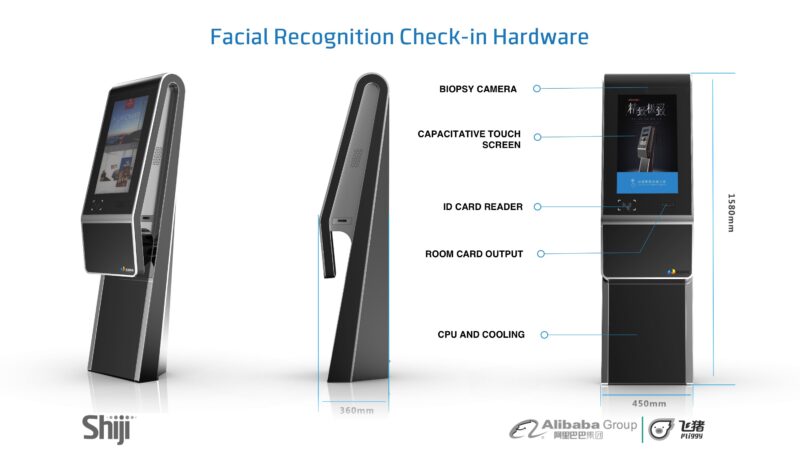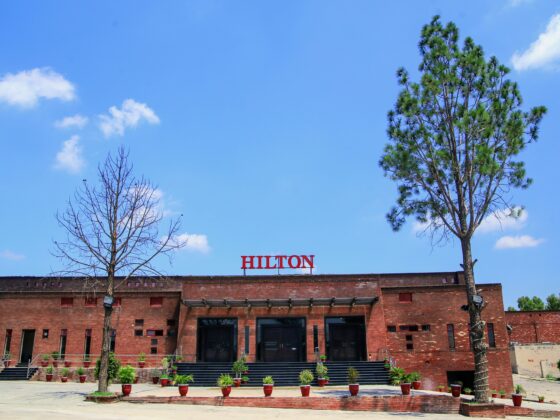
In this article, we’ll explore three KPIs that, when analyzed and acted upon, help achieve these goals. These KPIs are:
- NetRevPAR (Net Revenue per Available Room)
- Flowthrough
- RGI (Revenue Generation Index)
NetRevPAR: Moving Beyond Top-Line Revenue
What it is
NetRevPAR takes the traditional RevPAR (Revenue per Available Room) metric a critical step further by accounting for all customer acquisition costs—such as distribution fees, marketing spend, and transaction charges. While RevPAR measures how effectively you’re filling rooms at a high level, NetRevPAR reveals the actual profit contribution per room after subtracting these expenses. In other words, where RevPAR might be up, NetRevPAR might tell a different, more accurate story. This shift in perspective is fundamental if you use performance metrics to evaluate the effectiveness of your revenue manager or the entire commercial team. Relying solely on RevPAR could lead to strategies that boost revenue at the expense of profitability, as higher acquisition costs cancel out potential gains. NetRevPAR ensures that the focus isn’t just on top-line growth and sustainable, margin-enhancing revenue.
Why it Matters
By embracing NetRevPAR, you prioritize long-term value and cost control, driving the commercial team to be more strategic in channel selection, marketing investment, and rate decisions. Balancing Customer Acquisition Cost (CAC) against revenue becomes a core part of the team’s responsibilities, ensuring that every booking contributes to the bottom line. This approach clarifies why transitioning from RevPAR to NetRevPAR is essential: it aligns incentives, fosters greater accountability, and shifts the mindset from revenue maximization alone to genuine profit optimization.
Actionable Insights
Identify High-Value Customers by Segment and Origin
NetRevPAR analysis can highlight which guest segments or geographic markets deliver the highest profitability. For instance, direct bookings from a particular market segment may carry lower acquisition costs, resulting in a higher NetRevPAR. By combining insights from guest segments and key origin markets, you can identify the most valuable potential customers. This allows you to focus your marketing budget and sales efforts on segments with the highest net contribution, ultimately boosting profitability and enhancing your market position.
Identify High-Value Channels
Monitoring NetRevPAR helps pinpoint which distribution channels truly deliver profitable business. A channel might generate high RevPAR, but if the associated acquisition costs—like commissions, transaction fees, and loyalty program expenses—are also high, its net contribution could be disappointing. Identifying these imbalances helps you adjust your channel mix, negotiate better terms, and prioritize channels that boost profitability.
Strategic Rate Management
Consider a promotional offer that increases occupancy and RevPAR but causes acquisition costs to skyrocket. High commissions or excessive discounting might erode net profits. Tracking NetRevPAR provides a clear signal to re-evaluate these promotions, test alternative packages, or refine your pricing strategy so that every incremental booking adds value to the bottom line.
Operational Efficiency Improvements
Understanding NetRevPAR and the underlying CAC makes the commercial team more productive and cost-conscious. With a comprehensive view of both sides of the profitability equation—revenue and expenses—the team can allocate marketing budgets to their most productive channels and streamline distribution costs. Over time, this approach refines the entire revenue-generating process, ensuring that increased occupancy and rate improvements directly translate into more substantial net profits.
By leveraging NetRevPAR, you shift the focus from increasing revenue to enhancing sustainable profitability. This ensures that your commercial strategies are rooted in financial reality, driving better decisions, improving margins, and ultimately delivering a healthier bottom line for the hotel.
Flowthrough: Measuring How Revenue Gains Convert into Profit
What it is
Flowthrough is a critical metric that shows how effectively incremental revenue turns into incremental profit. While boosting top-line revenue is essential, true success lies in ensuring that these gains translate to the bottom line. Flowthrough measures the percentage of additional revenue that makes it through to operating profit after accounting for all variable costs. It shows how well the hotel’s commercial and operational sides work together to maximize profitability.
Why it Matters
By tracking flowthrough, you gain insight into two key areas:
Commercial Side: This shows if the team is attracting the right guests—those who spend more on profitable services and have lower servicing costs.
Operational Side: This highlights if the hotel’s processes, staffing, supplier relationships, and cost structures are set up to handle additional business efficiently.
These insights help ensure that increasing revenue doesn’t harm efficiency and margins. Tracking flowthrough over time reveals patterns that guide long-term strategy.
High Flowthrough: Consistently high flowthrough may justify investments in facility upgrades, technology, or expanding profitable services, as it shows that extra revenue reliably increases profit.
Low Flowthrough: Consistently low flowthrough is a warning sign, suggesting a need to reassess cost structures, operational procedures, and the types of guests and segments being targeted.
Actionable Insights
Evaluating the Commercial Team’s Performance
Flowthrough can also gauge how effectively the commercial team attracts profitable business. If the team consistently brings in guests who pay solid room rates and generate additional revenue from food and beverage, spa treatments, or other services—and does so with relatively low acquisition and servicing costs—your flowthrough should improve. This becomes a meaningful metric for assessing commercial efforts: not just how much they sell but how profitably they sell it.
Product and Service Development
A lower-than-expected flowthrough indicates that expenses are rising as fast as—or even faster than—revenue. This discrepancy can occur if your guests require more expensive amenities or operational inefficiencies drive up costs. Understanding which products, services, and packages yield the highest marginal profit can guide strategic development. If selling more in-room dining or premium spa services leads to a higher flowthrough, you can focus on promoting these offerings. Similarly, if specific amenities drag down profitability—perhaps they require too much staffing or come with high external fees—you can adjust or discontinue them. Over time, the hotel’s menu of products and services evolves toward a more profit-oriented mix.
Aligning Guest Segments and Processes
When flowthrough falls below expectations, it may signal that the hotel is attracting guests who don’t fit its profit profile or that the processes for serving those guests are inefficient. Perhaps certain traveler types demand more labor-intensive services or prefer products with lower margins. In response, you might target new guest segments with different preferences, refine the guest experience processes to deliver services cost-effectively or develop new amenities that match guests’ willingness to pay with favorable margins. Adjusting your operational model and guest mix ensures that every incremental dollar earned contributes proportionally to profit.
By looking beyond top-line growth and examining flowthrough, you ensure that rising revenues boost—rather than harm—your hotel’s bottom line. This metric encourages collaboration between the commercial team and operations, supports thoughtful product development, and offers a plan for lasting profitability. In short, flowthrough turns additional revenue into significant, lasting financial gains.
RGI (Revenue Generation Index): Benchmarking Against Competitors
What it is
The Revenue Generation Index (RGI) measures how effectively your property captures market share of room revenue compared to defined competitors. By comparing your hotel’s revenue performance to that of your comp set or the broader market, RGI clearly indicates whether you’re securing your fair share—or exceeding it—of the available demand. Unlike internal metrics focusing solely on your property’s results, RGI offers an external yardstick, helping you see where you stand in the marketplace.
Why it Matters
The first two KPIs—NetRevPAR and Flowthrough—give you an inward view, focusing on how efficiently you generate and retain profit from your business. RGI, on the other hand, places you in the context of your competitive landscape. This metric illuminates critical factors such as market size, seasonal patterns, competitor positioning, and how well you capture the available demand relative to others. It ensures you’re not making decisions in a vacuum and highlights what’s possible if you refine your positioning, pricing, or marketing strategies.
Actionable Insights
Market Positioning
If your RGI is lower than expected, competitors may have an edge in pricing, product quality, brand recognition, or marketing reach. For instance, you might discover rival hotels, run highly targeted campaigns, offer appealing packages, or leverage a stronger brand narrative. With this information, you can fine-tune your brand messaging, revisit your rate structures, invest in guest experience upgrades, or collaborate with local attractions to distinguish yourself and regain market share.
Sales and Marketing Focus
Tracking changes in RGI provides immediate feedback on the effectiveness of your sales and marketing initiatives. A rising RGI indicates that your outreach, promotions, and brand-building efforts resonate with guests. Conversely, a stagnant or declining RGI is a red flag, pointing to the need for strategic adjustments—perhaps redeploying marketing budgets toward more fruitful channels, revisiting loyalty program incentives, or experimenting with different promotional offers.
Continuous Improvement
Regularly comparing your performance to the market helps prevent complacency. Monitoring RGI trends encourages you to keep refining your approach. This might involve adjusting your distribution strategies, ensuring rate parity, boosting guest satisfaction, or improving your online presence. Each time you analyze your RGI against the market, you continuously learn, adjust, and improve.
Contextual Limitations of RGI
While RGI is a key tool for understanding your competitive position, it only focuses on room revenue. It doesn’t account for total revenue streams, such as dining, events, spa treatments, or retail, nor does it consider profitability. A property with a high RGI might excel in top-line revenue but struggle with profitability if cost structures, ancillary margins, or guest mix are not optimal. On the other hand, a slightly lower RGI could still result in higher overall profit if you’ve targeted guests who spend more across the property or are cheaper to serve.
Therefore, RGI should be seen as just one part of the puzzle. It’s a valuable external indicator but needs to be combined with internal KPIs like NetRevPAR and Flowthrough to get a complete view of performance. While beating the competition is rewarding, attracting the “right” guests who drive sustainable profit sets a hotel up for long-term success.
Conclusion and Key Takeaways
In a world full of data noise, the real power is in focusing on the metrics that matter most. Using NetRevPAR, Flowthrough, and RGI together gives you a balanced view of internal performance and external market positioning.
- NetRevPAR ensures you’re not just driving revenue but capturing it profitably after accounting for all customer acquisition costs.
- Flowthrough confirms that incremental revenue turns into incremental profit, highlighting where operational efficiency and guest profitability meet.
- RGI provides essential context for how your property compares to competitors, ensuring that internal improvements align with the broader market landscape.
These KPIs help you look beyond just top-line growth. They guide you in creating a strategy that encourages your team to attract the right guests—those who add real, sustainable value to your bottom line—and to outperform the competition. Success isn’t just about selling more rooms; it’s about delivering more profitable business, optimizing operations, and strategically positioning your hotel in the market. Focusing on these three KPIs sets the stage for meaningful, long-term performance gains that benefit both your guests and your bottom line.








